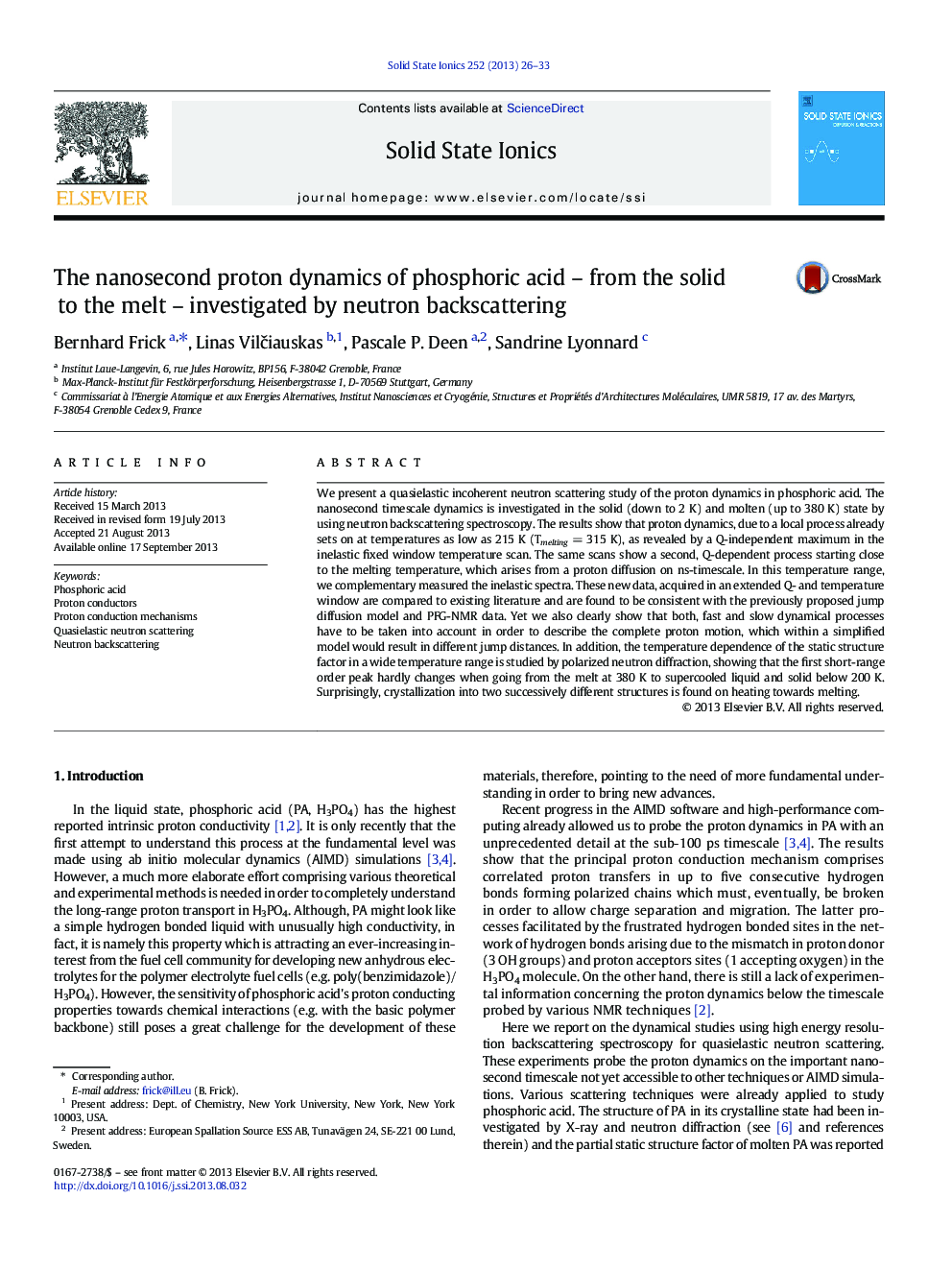| Article ID | Journal | Published Year | Pages | File Type |
|---|---|---|---|---|
| 1296575 | Solid State Ionics | 2013 | 8 Pages |
•We study the proton dynamics of phosphoric acid from the solid to the molten state by quasielastic neutron backscattering scattering.•Additional fast and slow relaxation components compared to the ns-time-scale dynamics are needed to describe the measured spectra with a jump diffusion model.•We find the onset of a local relaxation mode far below the melting temperature and in the molten state within the instrumental ns-time resolution a remaining elastic component.•Recrystallization into two successively different crystalline structures is observed in heating from the disordered solid to the melt.
We present a quasielastic incoherent neutron scattering study of the proton dynamics in phosphoric acid. The nanosecond timescale dynamics is investigated in the solid (down to 2 K) and molten (up to 380 K) state by using neutron backscattering spectroscopy. The results show that proton dynamics, due to a local process already sets on at temperatures as low as 215 K (Tmelting = 315 K), as revealed by a Q-independent maximum in the inelastic fixed window temperature scan. The same scans show a second, Q-dependent process starting close to the melting temperature, which arises from a proton diffusion on ns-timescale. In this temperature range, we complementary measured the inelastic spectra. These new data, acquired in an extended Q- and temperature window are compared to existing literature and are found to be consistent with the previously proposed jump diffusion model and PFG-NMR data. Yet we also clearly show that both, fast and slow dynamical processes have to be taken into account in order to describe the complete proton motion, which within a simplified model would result in different jump distances. In addition, the temperature dependence of the static structure factor in a wide temperature range is studied by polarized neutron diffraction, showing that the first short-range order peak hardly changes when going from the melt at 380 K to supercooled liquid and solid below 200 K. Surprisingly, crystallization into two successively different structures is found on heating towards melting.
